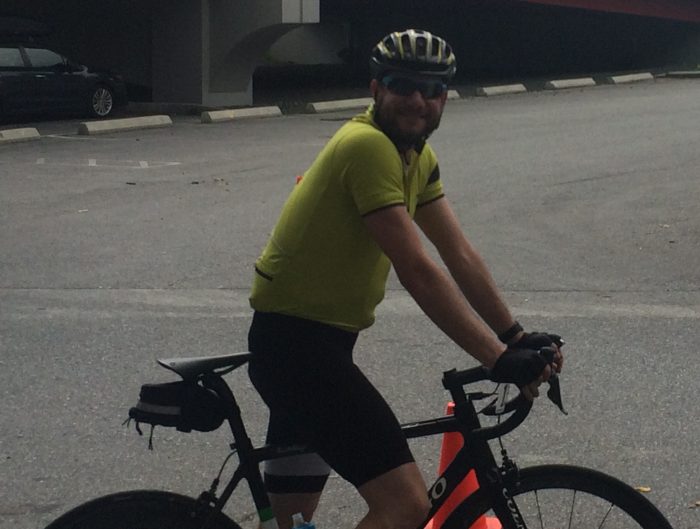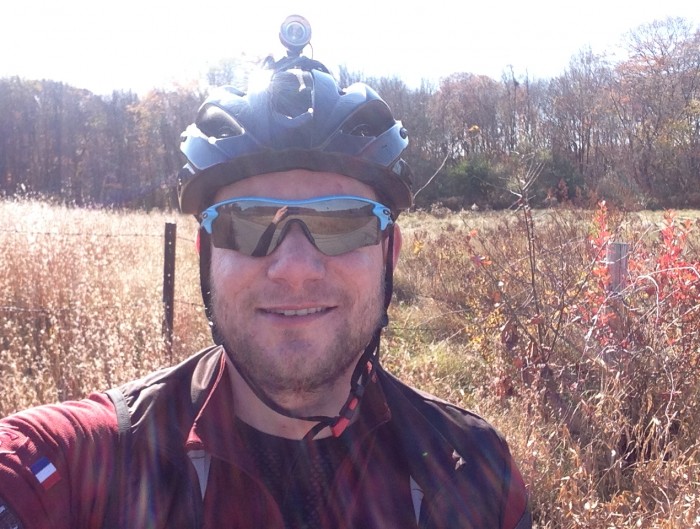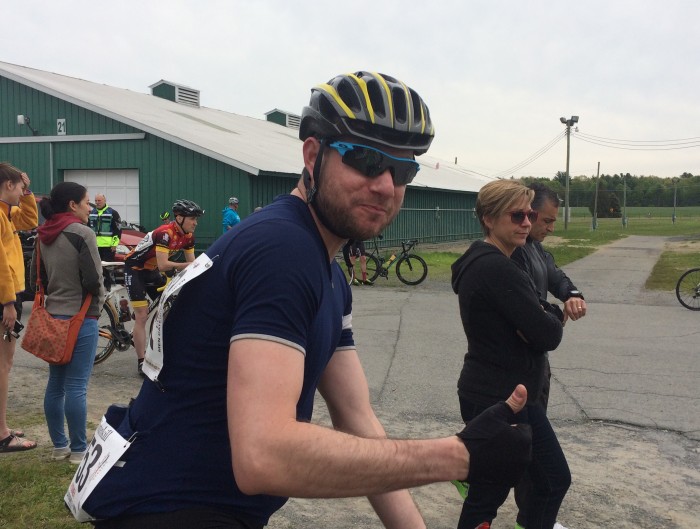Yesterday I raced–and actually completed!–the Quabbin Reservoir Classic Road Race, a 64.5-mile loop in Northern MA with over 5,000 feet of climbing. Now, as many of you know I am an avid, and I think reasonably fit, cyclist: in addition to having been an athlete all my life and a cyclist for about 20 years, I have ridden at least an hour a day for nearly two years, and I have a fantastic cycling coach who helps to ensure that I get the most out of my training. That said, there is an important caveat: I have a particularly time-consuming job, and I also weigh about 15 pounds more than what I should if I wanted to be competitive in these races.
All this is to say that eleven miles into the race (it’s worth noting that I am a “Cat 5,” which is the lowest level of cycling) I got “dropped” (distanced) by the peloton, or main group of riders. I wasn’t surprised; not only is the course hilly, but I haven’t been able to put in as much solid training this winter as I would’ve liked. What’s interesting, however, is that I train with a power meter, which means that I can see how many watts I am generating at any given moment. The beauty of training with power is that it gives you an objective measure of performance; the speed at which you ride is affected by wind, gradient, your bicycle, and other factors, but power is power is power.
Because I’ve been using a power meter for almost two years now, I have a good sense of my capabilities. I know, for instance, that my functional threshold, which is how much power I can generate for an hour, is about 235 watts (compared to 400 + for a professional), and I also know that I can generate around 400 watts for 60 – 90 seconds.
Based on all this data, I actually compare pretty favorably with the fastest guys in my category. The problem, though, is when the road tilts up. See, as long as the road is flat, then your speed is a function of your power and aerodynamics; weight doesn’t make much of a difference. But as soon as there is an incline, your weight becomes increasingly determinant of your speed. For me, I can keep up until about 4%, after which point I start to struggle.
Doing the math shows why. When it comes to climbing, the most important number is your power-to-weight ratio, which is calculated by taking your weight in kilograms and dividing it by your wattage. Suppose I am generating 260 watts on the flat; as I mentioned before, this means that I can ride evenly with people who are generating about that much power, because weight doesn’t matter much. But now let’s suppose there is a 5% gradient. I weigh 77 kilos, and let’s suppose the other guy with me weighs 68. Even though we are both generating 260 watts, my power-to-weight ratio is 3.37, compared to 3.82 for him. Bottom line? I can’t keep up.
So eleven miles into the race we hit a “double climb”–an incline followed by a plateau and then another climb. While I could dig deep and hang on on the first uphill section, I didn’t have enough time to recover before the next section. My power data shows this quite clearly:

As you can see, I averaged 396 watts (the line shows wattage) for that section, which is about the max I can generate for a minute. Despite that, I was simply unable to keep up. It wasn’t a matter of tactics or trying hard enough: my power-to-weight was simply not good enough.
As I got dropped, however, I didn’t end my race. I soon reconnected with a group of about 5 riders who also had been dropped and we rode together in a pace line to try to catch up (even though I knew we would never catch the leaders, I wanted to ride as hard and fast as I could, and riding in a pace line is much faster than riding by yourself because you can draft). As you can see below, I continued to ride really hard:

In short, I averaged 293 watts for the five minutes during which I was dropped and then chased. Not bad! In the end, I averaged 18.5 MPH and had a “normalized power” (a measure of my power when you strip out coasting) of 235 watts. Considering my weight, the fact that this was the longest ride I’ve done since October of last year, and the limited amount of time I have to train, I’m pretty happy with how it went! I don’t yet know what place I finished in (the results haven’t been posted), but it doesn’t matter. My goal is to get down from 170 to 160 pounds by August, at which point, without becoming more powerful, I should be able to stay with the leaders for the entire race.
All-in-all, a great race! Sure, I did have a very minor crash (I was climbing, looked down for a sec, and tapped the wheel of the guy in front of me) and the level of exertion was exhausting, but this is why I love cycling: the data doesn’t lie, and there is a direct link between how well you do and how willing you are to suffer!
Oh, and you can click here to read a recent post I wrote about weight loss titled On Weight Loss & Willpower.




Leave A Reply